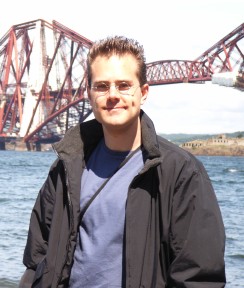Recent Grant success: EPSRC First Grant on “Constrained low rank matrix recovery: from efficient algorithms to brain network imaging”
August 27, 2013
by Thomas Blumensath
Dr Blumensath, a researcher and one of the co-chairs from the Computationally Intensive Imaging group was recently awarded a grant from the EPSRC to study advanced image processing techniques to analyse Brain Imaging Data.
In this project Dr Blumensath will develop new computer algorithms to analyse data that arises, for example, in brain imaging. Building on his previous work in applied mathematics and signal processing, he intends to develop methods that can extract relevant information from complicated data-sets and even recover missing data. To do this, he will develop more accurate mathematical models that capture important structure that exist in the data. Almost all data we encounter in science and engineering is highly structured and if we could exploit this structure better, then we could solve many data analysis problems we currently face.
Dr Blumensath’s work in this area is motivated primarily by his recent work on human brain imaging, which he did in Oxford’s centre for functional MRI of the brain. During his time in Oxford, he worked on the human connector project (http://www.humanconnectome.org/). The human connectome project uses the latest Magnetic Resonance Imaging techniques to try and understand how the human brain is wired. In the course of the project, brain scans from over 1000 people will be collected and analysed. Dr Blumensath’s role in the project was to look at better ways to analyse this data and the new EPSRC grant will take this work a step further.
This “EPSRC First Grant” is a one year project that will support Dr Blumensath and a postdoctoral researcher to work on new data analysis techniques. While most of the development of new algorithms will be done here in Southampton, the work will link closely with that of colleagues in Oxford and the US to try and use the new methods on the human connectome data. Ultimately, the aim is that this will provide neuroscientists with better tools to study the living human brain and thus provide them with a better understanding of the things that go wrong in debilitating brain disorders such as Alzheimer’s, autism, schizophrenia and epilepsy.
Categories: Blog. Tags: CII, Computationally Intensive Imaging, EPSRC, imaging, Multidisciplinary Research, Thomas Blumensath, and USRG. Project names: Constrained low rank matrix recovery: from efficient algorithms to brain network imaging.


